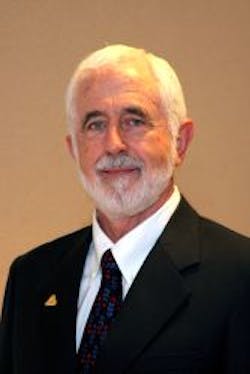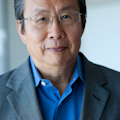Business Forum: The laser-focused society in the photonics community

This is the third in a series of interviews with leaders of our professional societies to give us a better understanding of the ecosystem of our industry. Peter Baker is the executive director of the LIA, the Laser Institute of America. He is an honors physics graduate of London University and worked for the U.K. Government Space and Guided Weapons department designing star tracking control systems before joining Itek in Lexington, MA, as a senior physicist. He designed his first laser in 1970 at Micronetic Systems, where he rose to senior VP. After teaching physics and math in Nairobi, Kenya, he returned to the U.S. to join Quantrad and was promoted to president/CEO. He joined LIA as executive director in 1988. Peter is a past president of the Council of Engineering and Scientific Society Executives and a past president, life member, and Fellow of LIA.
Milton Chang: Tell us about the LIA.
Peter Baker: We were founded in 1968 as the Laser Industry Association with 14 founding directors, including Arthur Schawlow and Theodore Maiman. Later we morphed into the Laser Institute of America with the triangular logo containing the words Education, Government and Industry. Our mission is to foster lasers, laser applications, and laser safety worldwide. We have about 150 corporate members, 1250 individual members, and a client base in the tens of thousands whom we serve via our publications, conferences, and courses.
MC: How do you fulfill each of the missions?
PB: For safety, we are accredited by the American National Standards Institute (ANSI) as the Accredited Standards Committee (ASC) Z136 to develop standards for the safe use of lasers. There are nine standards ranging from the parent standard to medical and manufacturing. In addition to publishing the standards, we have a range of laser safety training courses to educate laser safety officers and medical laser safety officers as well as technicians and operators. We also have an affiliated company, the Board of Laser Safety (BLS), to provide certification for safety officers. These courses are offered at user facilities and online. We also hold the biennial International Laser Safety Conference.
In the application area we have been the leaders in laser materials processing through our annual International Congress on Applications of Lasers & Electro-Optics (ICALEO) and with our Journal of Laser Applications (JLA). The roots of all current applications in the areas of cutting, welding, drilling, heat treating, marking, additive manufacturing, and 3D printing can be found in ICALEO proceedings.
MC:Articles on topics like inkless marking on plastic in LIA TODAY clearly indicate you are bridging the gap between technology development and real-world applications in ways no other professional society is doing.
PB: Yes, we are. This is how LIA differs from other professional and scientific organizations. We are unique because the latest lasers and processes are presented at ICALEO, and then we bring our laser safety and application knowledge to the end-user community when the knowledge is reduced to practice.
MC: How does LIA foster advanced manufacturing?
PB: We started in 2009 with our first Laser Additive Manufacturing (LAM) Workshop. We have speakers from Germany, China, Australia, the U.K., and the U.S. covering a range of topics including cladding and repair of high-cost components and powder-bed and powder-fed 3D manufacturing techniques.
Our other main manufacturing effort is our Lasers for Manufacturing Event (LME), which is in its fourth year. Manufacturing professionals can find everything they need in one place in one day. We offer free training on subjects including the basic kinds of lasers used in manufacturing and what they can make; the key components of laser systems; and the basics of welding, additive manufacturing, and calculating ROI. On the show floor, we display laser-made parts, an “ask the expert” booth, and a Laser Technology Showcase theater with talks on what is new and exciting. This year, we will add a Lasers for Manufacturing Summit to give senior corporate leaders an overview of the technology.
MC: What’s new and exciting in lasers for manufacturing?
PB: It’s hard not to find lasers involved in making the things we use every day. They are used to cut, weld, or mark many materials including high-strength steel, aluminum, titanium, and related alloys. In a growing number of cases, lasers are the only viable way to process the material. Ultrafast laser technology allows precision burr-free drilling and cutting, usually of small items like stents and difficult materials like glass, which can be cut and welded with lasers.
Then, of course, there is laser additive manufacturing or 3D printing, to build things layer by layer. Instead of removing material with cutting tools (subtractive manufacturing), we build the part from scratch with powder made solid by lasers. This requires a completely new approach on the part of designers, as parts can sometimes be as much as 80% lighter and still provide the required mechanical properties.
MC: You have been the executive director of LIA for 25 years, credited for building LIA from a struggling small association. What have been the sea changes in the industry since you began?
PB: Let me start with some things that have not changed in my 25 years. We are blessed with a steady flow of volunteers who serve as speakers, teachers, session chairs, conference chairs, and Board members and guide us while doing a large part of the society’s work. Our officers and particularly our presidents have been outstanding, generously donating their time and efforts to LIA—even after their terms are over. For me, it is a huge positive that every one of the past presidents has become a friend.
As for changes, it has been interesting to see each of the key technologies evolve. In my opinion, three major factors have made today’s lasers viable as manufacturing tools:
The first is the range of average power available, now up to tens of kilowatts and the range of pulse-widths down to picoseconds.
The second is the huge improvement in reliability. Today’s lasers can run for tens of thousands of hours with minimal maintenance.
Third is the dramatic increase in wall plug efficiency from a few percent in the old days to as high as 30% now. Today’s lasers are truly industrial tools.
The only surprise to me was how long it takes to adopt the technology—sometimes it takes until the next generation of users.
MC: How is laser technology being advanced globally?
PB: We have seen a steady erosion of materials-processing research in the U.S. together with a continued increase in Europe (particularly Germany) and now China. Although President Obama has committed some funds to upgrade manufacturing in the U.S, the scale of the effort is tiny in comparison with the funding levels in Europe and China.
MC: How does the National Photonics Initiative change what you do?
PB: There are many advantages to manufacturing onshore in the U.S., and we intend to help people upgrade their technology. We will continue to promote the application of lasers in manufacturing. Whether at small job shops or major manufacturers, laser-driven production in the U.S. is saving time, energy, and materials. Further profit-building efficiencies derived from photonics are clearly on the horizon.
MC: More specifically?
PB: We plan to continue serving global researchers in laser materials processing and laser safety via ICALEO, ILSC, and JLA and to increase our efforts in manufacturing and laser additive manufacturing to meet our mission to foster laser applications worldwide.
We learned a long time ago that a huge part of LIA’s value is in networking face to face. Ultimately, the global laser community is a family made up of highly dedicated and knowledgeable members driven to further harness the power of lasers to benefit society. LIA’s role is to serve as their “home” of sorts—the place where they can gather, share new findings, ask questions, and reinforce their sense of purpose.
About the Author
Milton Chang
MILTON CHANG of Incubic Management was president of Newport and New Focus. He is currently director of mBio Diagnostics and Aurrion; a trustee of Caltech; a member of the SEC Advisory Committee on Small and Emerging Companies; and serves on advisory boards and mentors entrepreneurs. Chang is a Fellow of IEEE, OSA, and LIA. Direct your business, management, and career questions to him at [email protected], and check out his book Toward Entrepreneurship at www.miltonchang.com.
